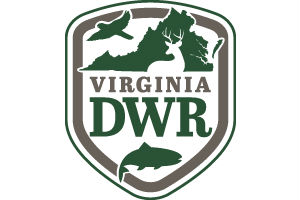
DWR is now asking anglers to assist us in determining the extent of gill lice by being on the lookout while fishing their favorite trout stream.
Trout infected with gill lice were observed on Blue Springs Creek, a tributary to Cripple Creek, located in Smyth County and Wythe County. Blue Springs Creek has a wild rainbow trout population, but gill lice were observed on wild trout as well as trout of hatchery origin.
Gill lice are tiny, parasitic copepods, a type of zooplankton, that attach to a trout’s gills, mouth and fins. A minor gill lice infection can generally be tolerated, but a heavy infection can have a negative impact on a fish’s ability to breathe. The degree of impact to a trout population can depend on the level of infection and the presence of any other stressors such as high water temperature.
The gill lice recently found in Southwest Virginia is likely Salmincola californiensis, a species that specifically uses rainbow trout and related species as its host. Another species of gill lice, Salmincola edwardsii, only infects brook trout. DWR biologists collected gill lice samples and have submitted them to the U.S. Fish and Wildlife Service’s Lamar Health Center for identification.
Since they were found on rainbow trout, however, they are likely Salmincola californiensis and pose little threat to native brook trout populations.
DWR staff are currently working to determine whether gill lice infections are isolated to Blue Springs Creek, are present in other parts of the Cripple Creek watershed, or have been introduced to other waters in the state. After the extent of the gill lice has been assessed, DWR will develop a plan to limit the spread to uninfected waters and to reduce the impacts in waters where gill lice are found.
Trout infected with gill lice can be safely eaten as long as they are properly cooked. Anglers can assist DWR by reporting trout infected with gill lice. Additionally, anglers are encouraged to clean and dry their fishing equipment after use, especially if they intend to travel to different waters.
For more information, visit dwr.virginia.gov/gill-lice and to report gill lice, email [email protected].










